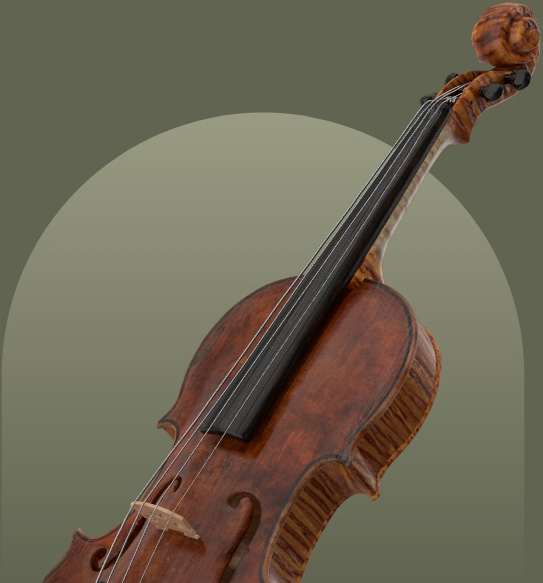John Dilworth
RAYMAN, Jacob (II) Worked circa. 1650 Southwark, London UK. Son and pupil of Jacob Rayman (I) above. Work unknown. [Bletschacher]
Cecie Stainer
b. in the Tyrol, but settled in London about 1620, living first at Blackman Street, then at Bell Yard, Southwark. He worked till about 1650. He seems to have been one of the earliest makers of violins in England ; they are of small size, of rather an ugly pattern, not arched. with small sound-holes ; the scroll also small but well cut; the varnish very fine, its colour a yellow-brown tinged with red; the tone, clear and penetrating. He also made some fine tenors, the workmanship good, although the purfling is sometimes defective. His instruments show ability and talent, and are greatly valued ; they have many of the characteristics of German work, and differ greatly from the work of the old English viol makers. In Thomas Britton’s collection of instruments was an ” extraordinary Rayman ” and also ” three others ditto.” Labels : ” Jacob Rayman dwelling in Blackman Street, Long-Southwark, 1641,” and “Jacob Rayman, at ye Bell Yard in Southwarke, London, 1648.”
George Hart
The subject of this notice was probably a German from the Tyrol, who settled in England about 1620 and may be considered as the founder of Violin-making in this country, there being no trace of any British Violin-maker previous to that time. His work is quite different from that of the old English Viol-makers. The instruments of Rayman are of a somewhat rough exterior, but full of character. The form is flat, considering the general style of the work. The sound-holes are striking, although not graceful in any way. The scroll is diminutive, but well cut. The varnish is very fine. In the catalogue of the effects of Tom Britton, mention is made of ” an extraordinary Rayman.”
Willibald Leo Lütgendorff
Er soll um 1620 in England eingewandert sein, ob wirklich aus Tyrol, wie man annimmt, ist jedoch ungewiss. Thatsache ist nur, dass seine Geigen deutsche Schule verrathen und sich sehr von den damals in England gemachten unterscheiden. Sein Modell steht zwischen der Stainer- und der Brescianer-Schule, ist aber wenig elegant in der Form. Dagegen ist der schöne, gelbbraune Lack, der oft einen feinen Stich ins Röthliche hat, sehr zu loben; auch im Ton sind seine Arbeiten gut, so dass er die Werthschätzung, die er heute noch findet, vollauf verdient. Er ist einer der Ersten, die in England Violinen gemacht haben; bei diesen sind die F-Löcher sehr klein, ebenso die Schnecke, die jedoch gut ausgestochen, während die übrige Arbeit wenig sorgfältig ist. Arbeiten von ihm waren zuletzt in der Wiener Musik-Ausstellung zu sehen. Seine Wohnungen geben seine Zettel an.
Henri Poidras
A Tyrolese who established himself in England and in all probability was the first to make a violin in that country. His work is a little primitive but his varnish particularly fine. This is yellow brown, slightly tinted with red. Flat model. The scroll, although well carved, is not in proportion with the body of the instrument.
